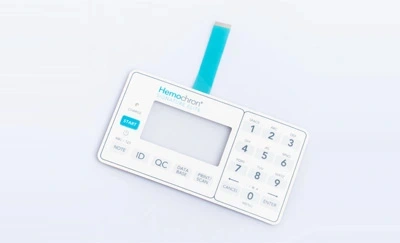
In today's fast-paced world, where technology is ever-evolving, businesses and consumers alike are constantly seeking ways to optimize efficiency and reduce expenses. One area that has garnered increasing attention in recent times is the cost of membrane switches. These often-overlooked components play a crucial role in various electronic devices and industrial applications. In this article, we will explore the reasons behind the growing consideration of membrane switch costs and discuss effective strategies to save on expenses, while ensuring product longevity and quality optimization.

Before delving into the cost considerations, it's essential to understand what membrane switches are and their significance. Membrane switches are user interfaces that consist of multiple layers of flexible materials. They are widely used in appliances, medical devices, industrial equipment, and automotive controls. These switches provide a reliable and user-friendly way to input commands or data into electronic devices.
Membrane switches are the unsung heroes of modern electronics. They offer several advantages, including:
Durability: Membrane switches can withstand millions of actuations, making them long-lasting and reliable.
Customization: They can be designed to fit specific applications, with options for tactile feedback, backlighting, and graphics.
Cost-Efficiency: Membrane switches are often more cost-effective than mechanical alternatives.
In recent years, customers have become increasingly aware of the cost implications associated with membrane switches. Several factors contribute to this growing concern:
As technology advances, customers demand higher quality and performance from electronic devices. Membrane switches must meet these elevated standards without compromising on cost-effectiveness.
The competitive landscape in the electronics industry has intensified. Manufacturers are under pressure to offer cost-effective solutions without sacrificing quality, pushing the scrutiny on membrane switch costs.
While customization is a significant advantage of membrane switches, it can also drive up costs. Customers are exploring ways to strike a balance between tailor-made solutions and budget constraints.
While the cost of membrane switches is a concern, it's equally crucial to ensure product longevity and quality optimization. Here are strategies to help customers manage expenses effectively while maintaining top-notch product performance:
Consider the desired product lifespan when choosing materials. For applications with lower longevity requirements, PC (polycarbonate) material can be an option. However, it has a limited lifespan, typically lasting only a few hundred thousand actuations. On the other hand, PET (polyethylene terephthalate) materials can endure over a million actuations, making them suitable for long-lasting products.
The choice of metal domes is critical for tactile feedback and product longevity. Options include stainless steel, tin-plated, and gold-plated domes. While stainless steel domes are the most cost-effective, Niceone-Keypad recommends nickel-plated domes. They not only offer a good balance between cost and performance but also reduce product resistance, ensuring consistent quality.
Consider the operating temperature range of your product. For applications in the 20-80°C range, domestically produced DT adhesive paper can provide cost savings. However, if your product operates in a broader temperature range (-20-80°C), we recommend 3M adhesive paper for superior performance and reliability.
Choosing the right membrane switch structure is crucial. An incorrect choice can lead to rapid product deterioration and hidden costs. If your product requires UV resistance, it's essential not to overlook this feature during the design phase to avoid potential issues.
In conclusion, the cost of membrane switches is gaining prominence in the minds of customers due to increasing quality expectations and market competition. However, there are ways to save costs without compromising on performance, product longevity, or quality. Collaborative design, material selection, metal dome choice, adhesive selection, and structural design are key strategies to consider. By carefully evaluating these factors and balancing cost-effectiveness with quality optimization, businesses and consumers can continue to benefit from the versatility and cost-effectiveness of membrane switches.
1. Are membrane switches more cost-effective than mechanical switches?
Membrane switches are often more cost-effective due to their durability and ease of customization. However, the cost-effectiveness depends on the specific application and design, taking into account product lifespan and quality requirements.
2. How can I ensure the quality and longevity of membrane switches while minimizing costs?
Working closely with experienced membrane switch manufacturers and considering design optimization, material selection, metal dome choice, adhesive selection, and structural design can help maintain quality and longevity while reducing costs.
3. What industries commonly use membrane switches?
Membrane switches find applications in various industries, including electronics, medical devices, automotive, and industrial equipment, where cost-effectiveness, durability, and customization are essential.
4. Is customization necessary for all membrane switch applications?
Customization is not always necessary. Standardized membrane switches can be suitable for many common applications and offer cost savings. However, for specialized needs, customization may be required.
5. How can I ensure UV resistance in membrane switches?
It's crucial to collaborate with experienced manufacturers who can incorporate UV-resistant materials and design features into membrane switches to ensure product longevity and reliability in outdoor or UV-exposed applications.
In summary, as the demand for higher quality and cost-effective solutions continues to grow, customers are increasingly considering the cost of membrane switches. By adopting smart strategies and collaborating with experienced manufacturers, businesses and consumers can navigate this concern, optimize product quality, and continue to benefit from these versatile user interfaces.